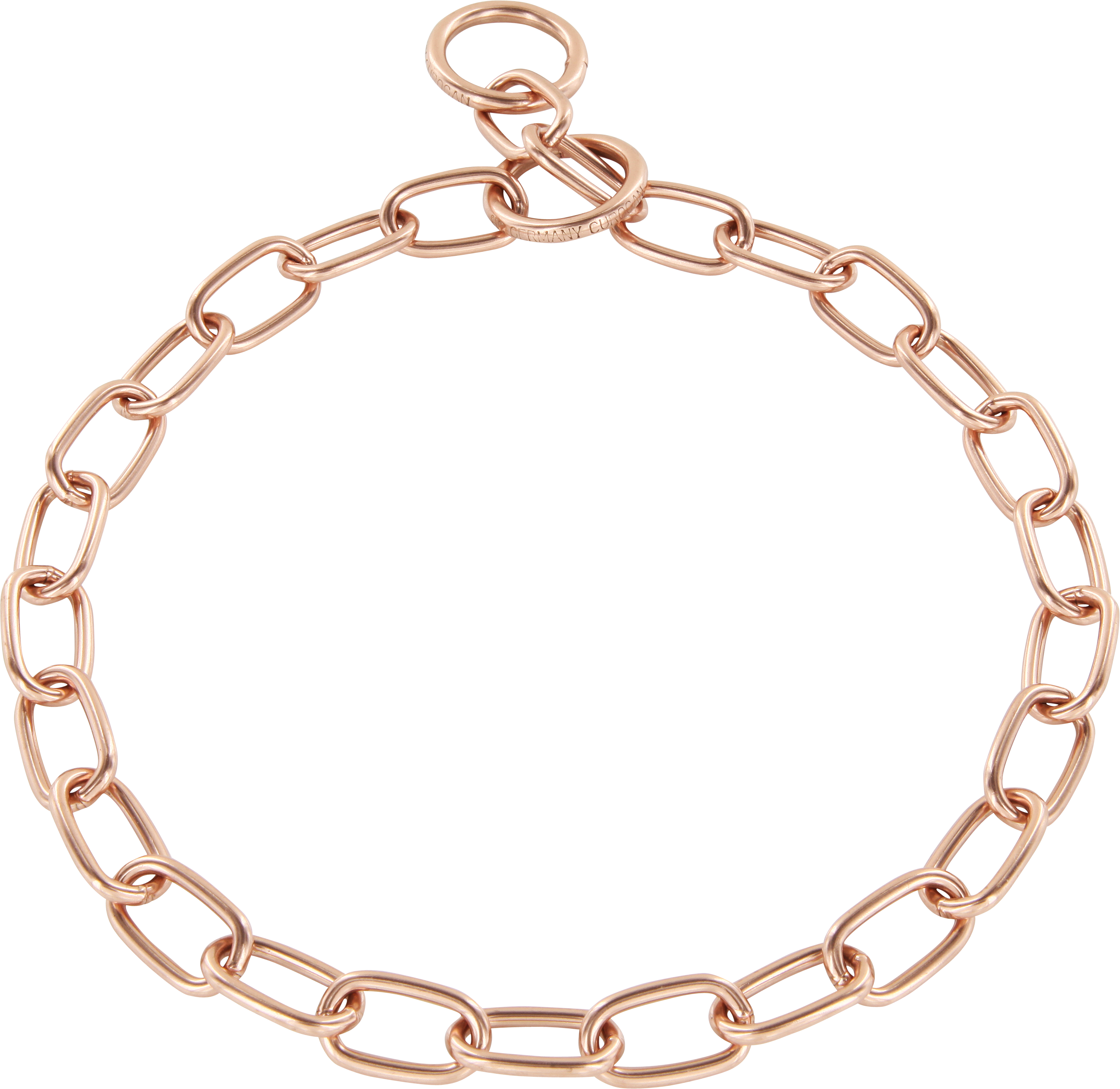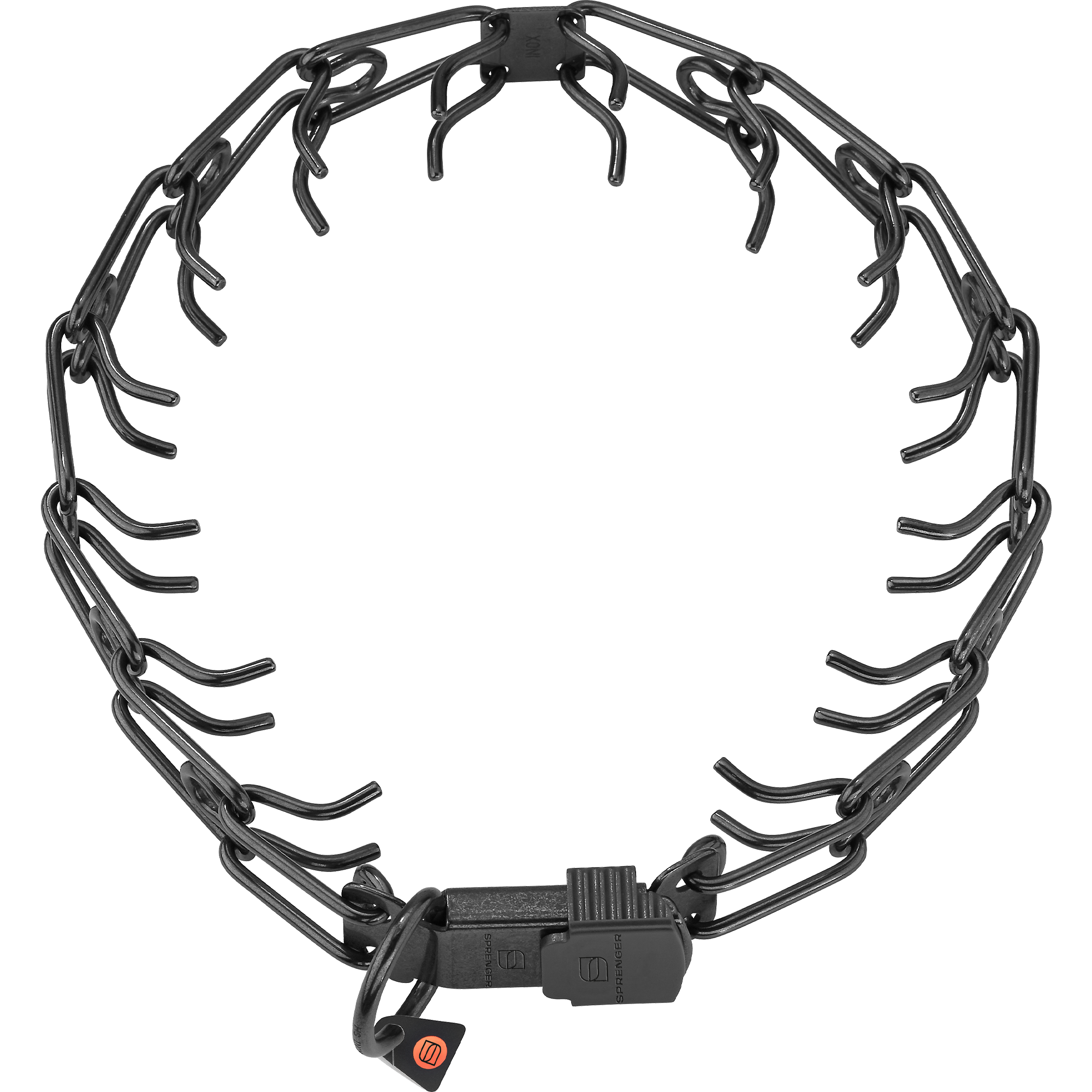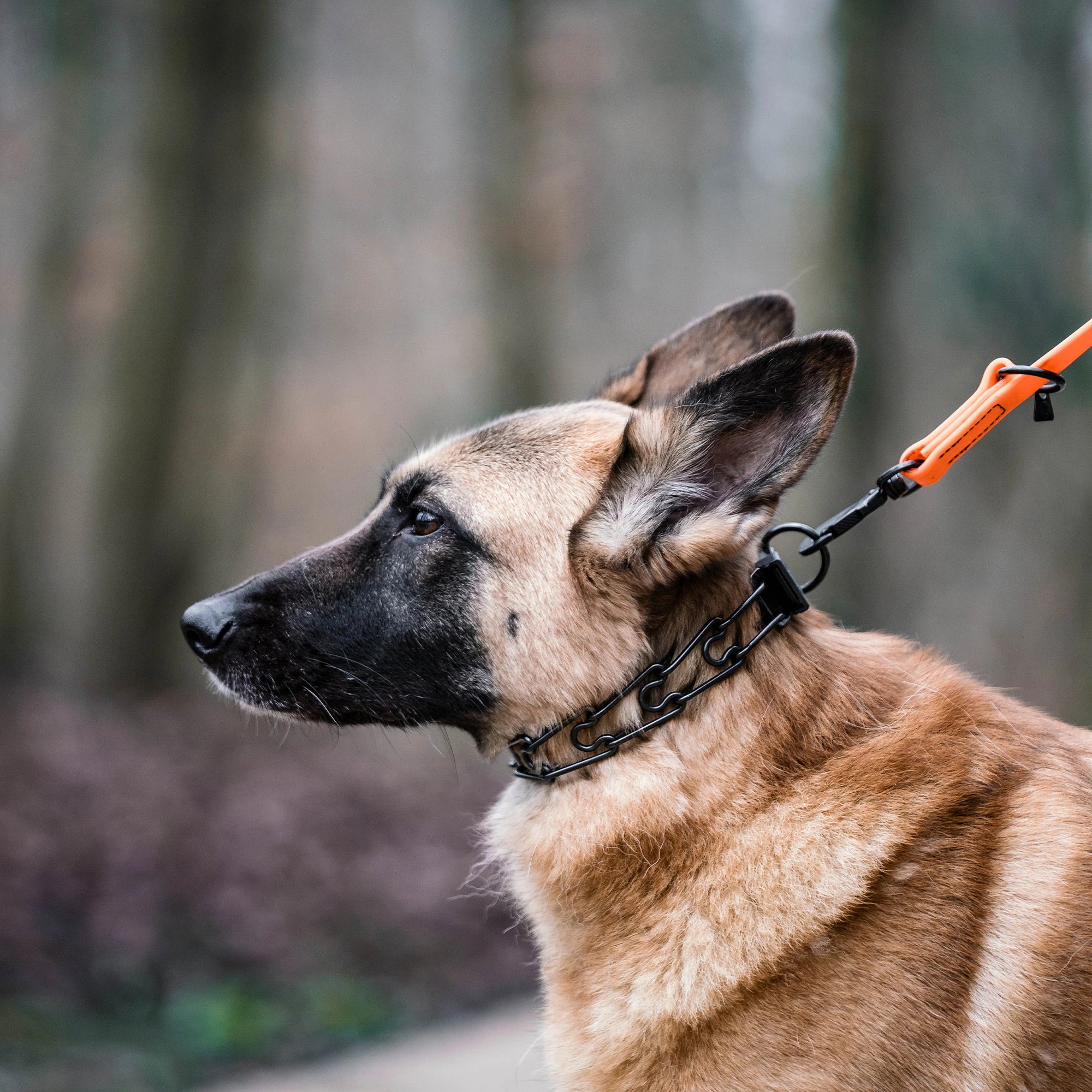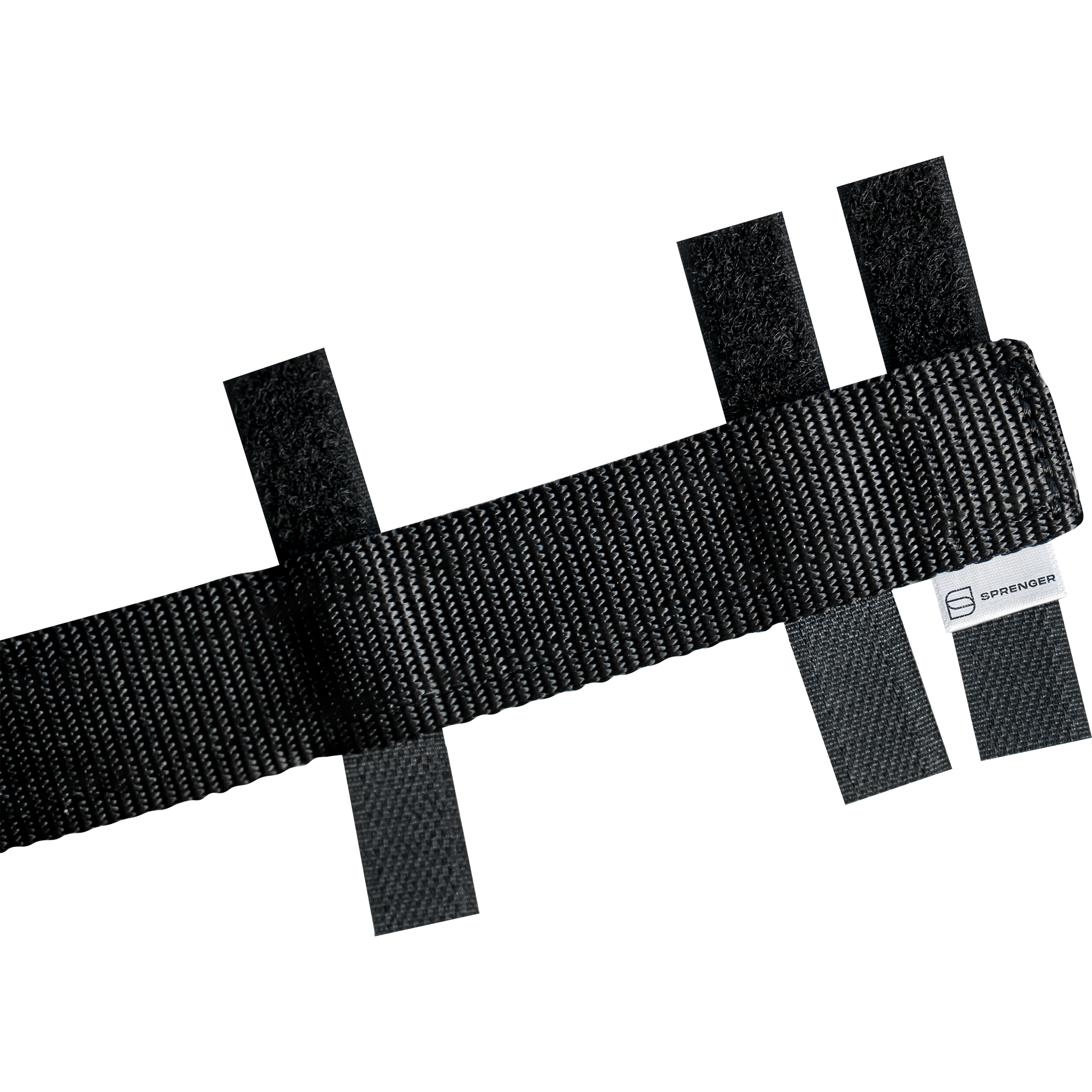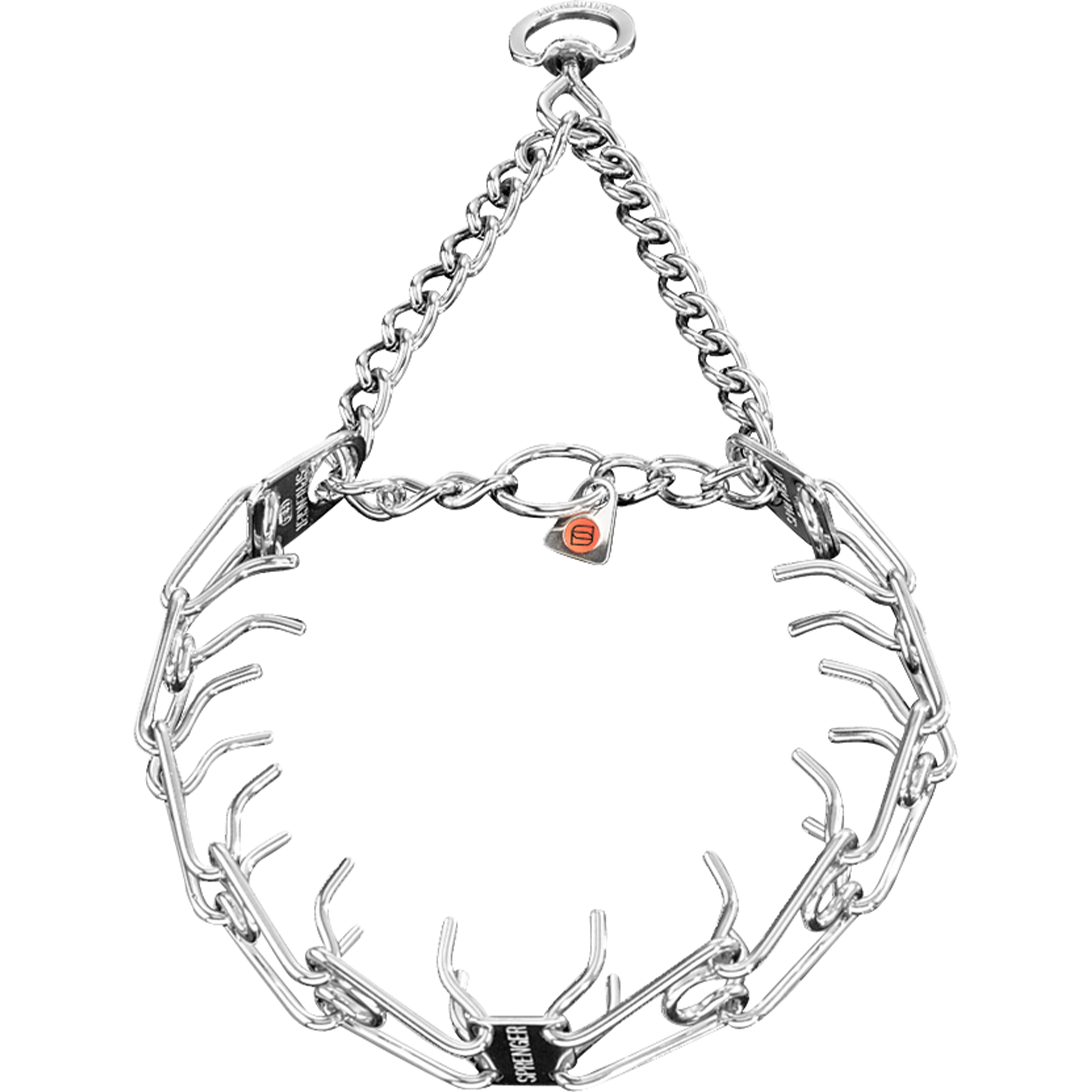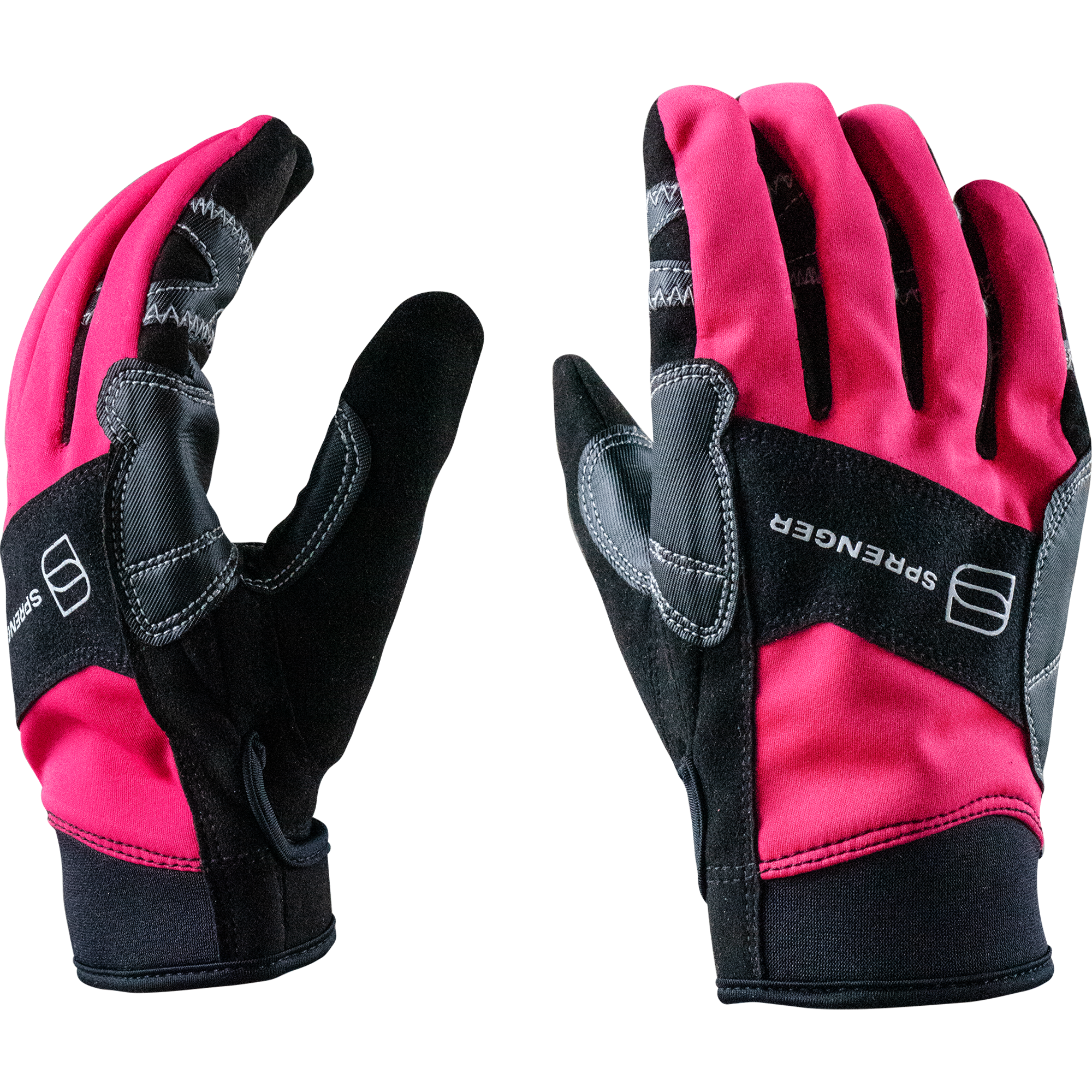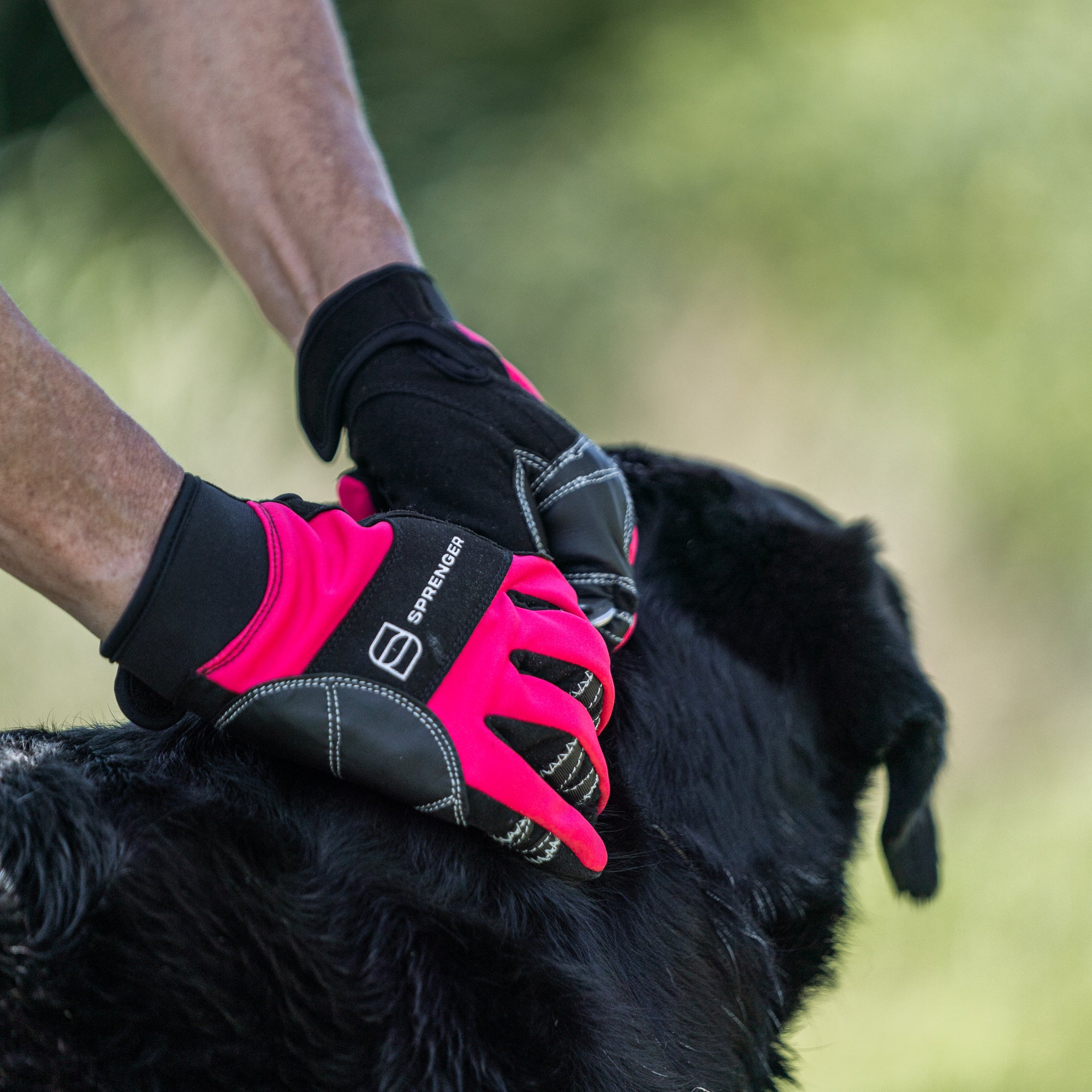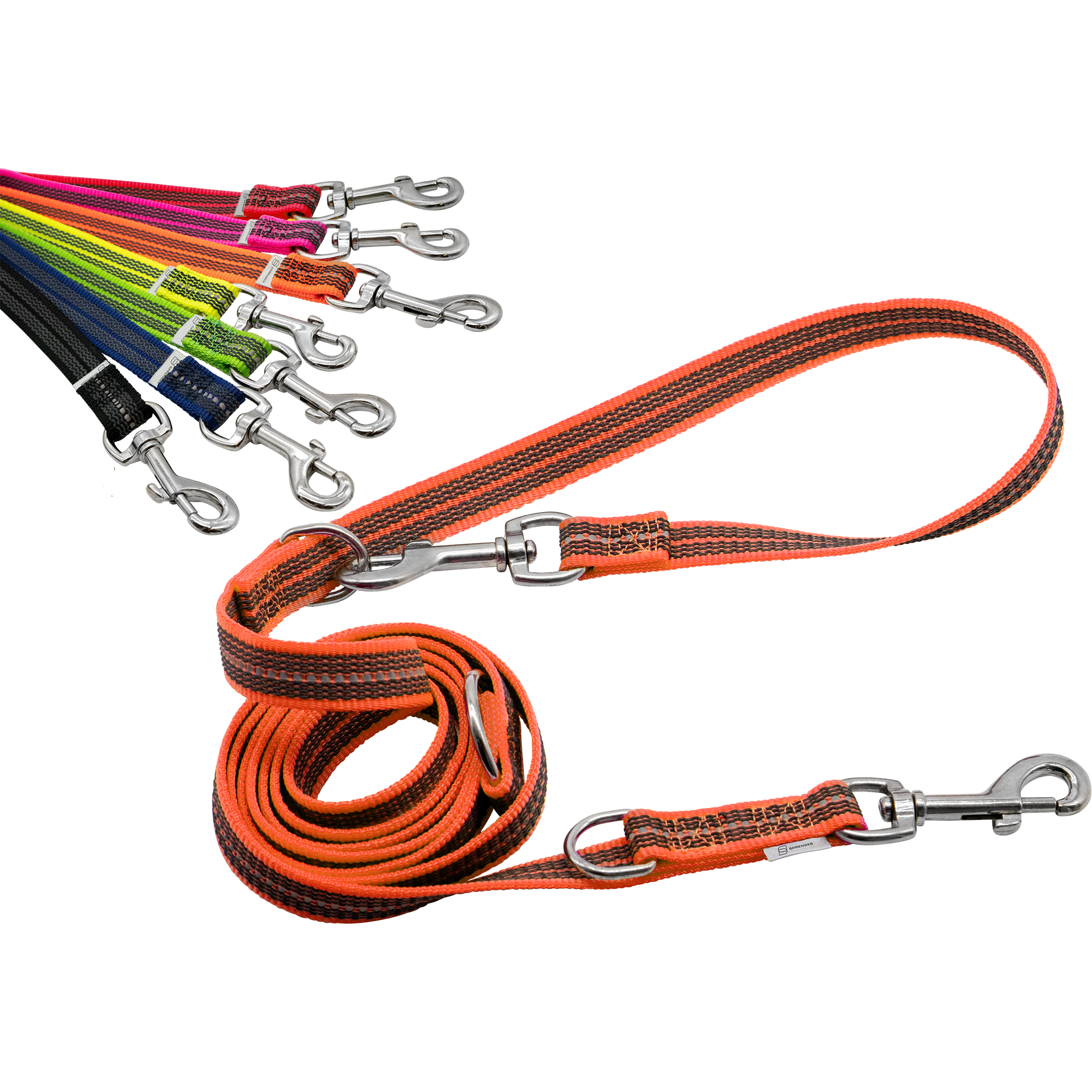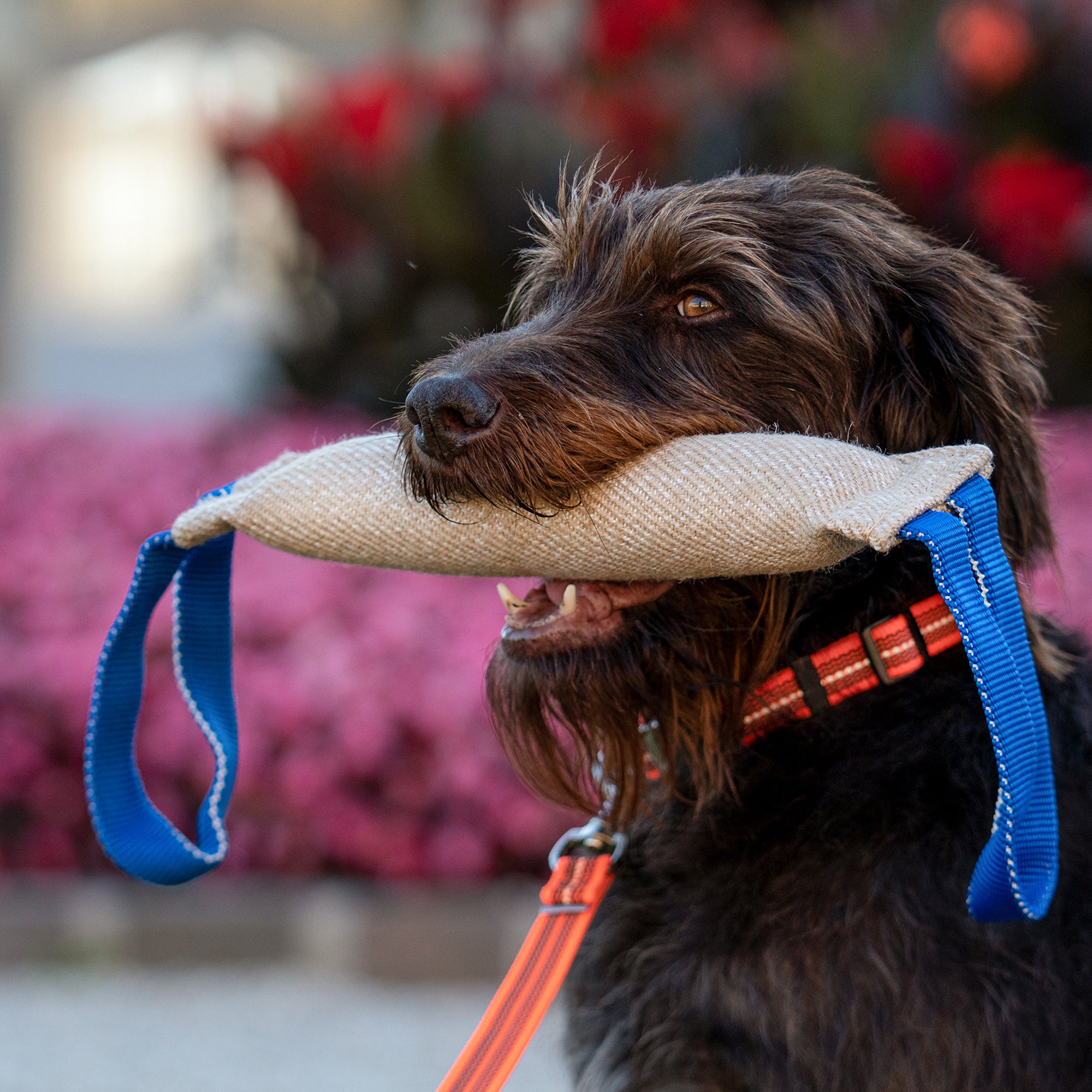Prong collars banned?!

The training collar is also known colloquially as a pinch collar and has fallen into disrepute in some countries over the years. Since 2022, education and training with prong collars has been banned in Germany e.g. and the focus is set increasingly on training with positive reinforcement. Nevertheless, their use is still commonplace in many other countries and supports training, especially in law enforcement and dog sports.
The training collar is also known colloquially as a pinch collar and has fallen into disrepute in some countries over the years. Since 2022, education and training with prong collars has been banned in Germany e.g. and the focus is set increasingly on training with positive reinforcement. Nevertheless, their use is still commonplace in many other countries and supports training, especially in law enforcement and dog sports.

Why use a prong collar?
Prong collars are used in training, especially for controlling unwanted behavior. Dog training collars provide clear signals, especially for leash training, obedience training or for controlling aggressive behavior.
The training collars should never cause pain to the canine! The breathing is also not restricted when used correctly. Herm Sprenger prong collars, such as the Herm Sprenger ULTRA PLUS training dog prong collar with center plate and ClickLock, are made to a particularly high standard and the individual chain links are particularly rounded so that they cannot injure the dog.
Training collars can be seen as a temporary aid for correcting unwanted behavior. The dog should not wear the prong permanently, but only during training when situations arise that need to be corrected. The individual inwardly shaped chain links provide an impulse that focuses the dog's attention back on the handler. The short, quick signals ensure effective correction, as misbehavior can be reacted to quickly and the impulse is released immediately after the dog has adjusted its behavior. This action works similar to a ‘nip’ from a pack membera dog would receive for behavior that is unwanted und not accepted.

The NeckTech Sport imitates the fangs of dogs and thus has a natural effect and enables clear, uncomplicated communication. This allows your dog to be trained gently and harmoniously. The training collar is suitable for short and long-haired breeds. What's more, it is not visible from the outside that it is a prong collar. Of course, there are also covers for normal training collars.
The NeckTech Sport imitates the fangs of dogs and thus has a natural effect and enables clear, uncomplicated communication. This allows your dog to be trained gently and harmoniously. The training collar is suitable for short and long-haired breeds. What's more, it is not visible from the outside that it is a prong collar. Of course, there are also covers for normal training collars.

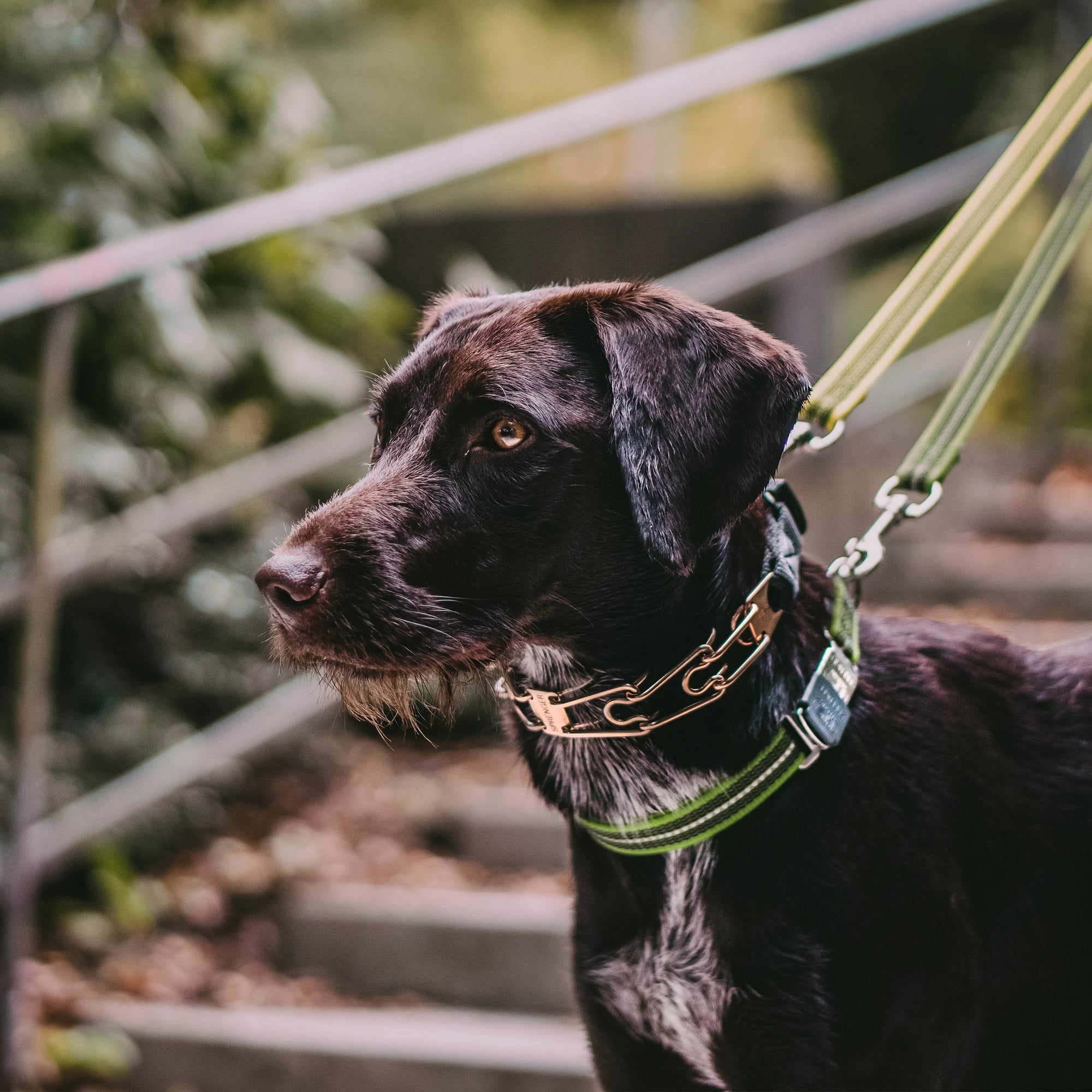
If you are using a training collar for the first time, you should consult an experienced trainer who will explain the correct application and fit. As the individual chain links can be removed or added as required, the Herm Sprenger prong collar can be individually adjusted to the dog's neck circumference. The wire gauge should be selected depending on the body weight of the canine in order to withstand the strain.
The prong collar is always used in combination with a normal collar and is often used with a so-called safety clip, which connects the prong and collar. This offers additional safety, should the rare case occur.
If you are using a training collar for the first time, you should consult an experienced trainer who will explain the correct application and fit. As the individual chain links can be removed or added as required, the Herm Sprenger prong collar can be individually adjusted to the dog's neck circumference. The wire gauge should be selected depending on the body weight of the canine in order to withstand the strain.
The prong collar is always used in combination with a normal collar and is often used with a so-called safety clip, which connects the prong and collar. This offers additional safety, should the rare case occur.


In many countries, the use of prong collars or prong collars is becoming increasingly regulated. In Germany, for example, their use is banned, while in some neighboring countries they are still widely used.
The use of prong collars in the training of so-called 'Schutzhunde' is not uncommon, especially among the authorities. Some continue to advocate their use, even though in many places training is already based on positive reinforcement. In Germany, for example, before the ban, training collars were only used by the authorities when absolutely necessary and were not generally included in training. In the US, on the other hand, the use of prong collars and choke collars is much more common. Not only the authorities rely on the use of these aids, but also renowned dog trainers. Regrettably, there exists a significantamount of misinformation surrounding prong collars, exacerbated by instances of misuse. While we advocate strongly for the appropriate training and usage of our collars, we also recognize that employing a prong collar in training may not be suitable for every dog.
In many countries, the use of prong collars or prong collars is becoming increasingly regulated. In Germany, for example, their use is banned, while in some neighboring countries they are still widely used.
The use of prong collars in the training of so-called 'Schutzhunde' is not uncommon, especially among the authorities. Some continue to advocate their use, even though in many places training is already based on positive reinforcement. In Germany, for example, before the ban, training collars were only used by the authorities when absolutely necessary and were not generally included in training. In the US, on the other hand, the use of prong collars and choke collars is much more common. Not only the authorities rely on the use of these aids, but also renowned dog trainers. Regrettably, there exists a significantamount of misinformation surrounding prong collars, exacerbated by instances of misuse. While we advocate strongly for the appropriate training and usage of our collars, we also recognize that employing a prong collar in training may not be suitable for every dog.


